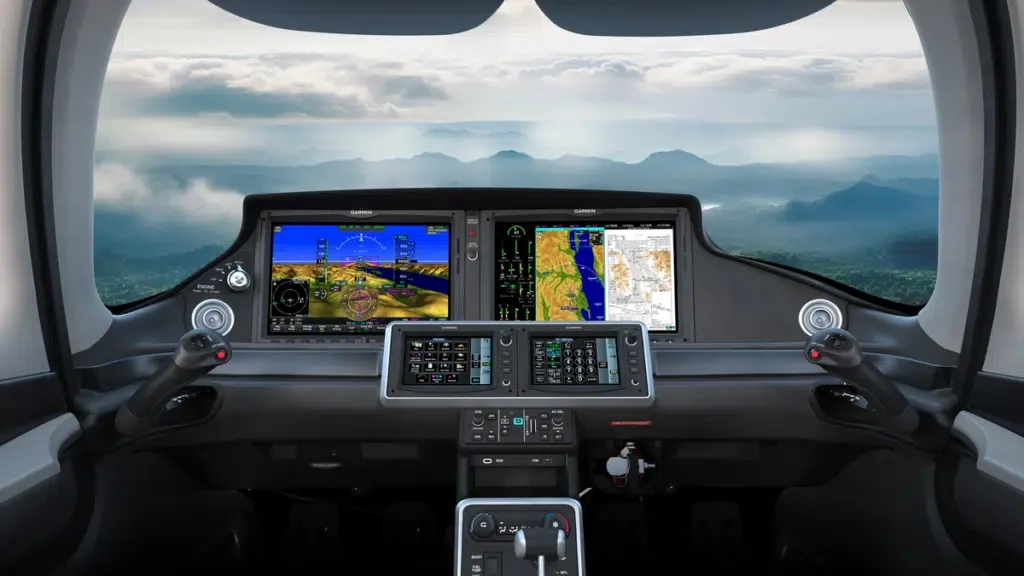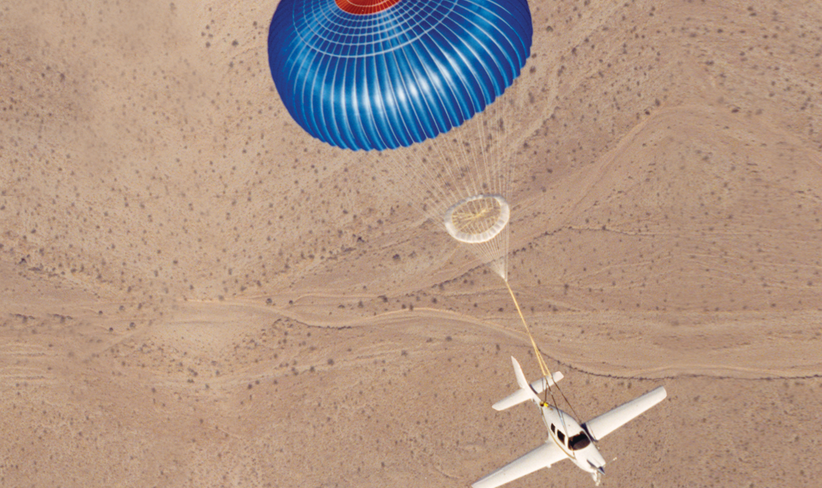
Welcome back to our blog series dedicated to exploring exciting new features the SR Series G7 has to offer. In our last blog, we explored the first-class comfort and convenience that the G7 offers. From more legroom for both pilots to accent lighting and thoughtful storage solutions, the SR Series G7 redefines what it means to fly in luxury and style.

Now, let’s shift our focus to the state-of-the-art safety features that make the SR Series G7 a leader in personal aviation.
Cirrus Airframe Parachute System® (CAPS®)

At the heart of Cirrus commitment to safety is the Cirrus Airframe Parachute System® (CAPS®). This revolutionary safety feature is designed to protect the pilot and passengers in the event of an emergency by deploying a parachute that brings the entire aircraft safely to the ground. CAPS® has saved over 250 lives and continues to be a cornerstone of Cirrus safety philosophy.
Aircraft Protection
The SR Series G7 introduces several new features that enhance flight safety. The first-in-class stick shaker provides an immediate tactile cue to the pilot when the aircraft is nearing a stall, supplementing visual and audible warnings. This crucial feature aids in maintaining control and preventing stalls.

Additionally, the flap airspeed protection system ensures that flaps are only extended or retracted within safe speed ranges. This intelligent safeguard prevents flaps from deploying at excessive speeds and keeps them from retracting during critical flight phases when speeds are too low, thereby promoting a safer flying experience.
Hypoxia Detection & Auto Descent
The G7’s advanced avionics are designed to safeguard you during flights at higher altitudes.
Here’s how it works:
- System Activation: The safety system arms when you reach an altitude of 14,900 feet. From that point, the avionics monitor your interactions.
- Inactivity Alert: If there is no activity for a certain period, the system issues a white advisory CAS (Crew Alerting System) message.
- Hypoxia Warning: If you don’t respond within 60 seconds, the system escalates to a yellow caution hypoxia warning.
- Auto Descent Warning: If there’s still no response after another 60 seconds, a red warning CAS message appears, accompanied by repeating double chimes. This indicates that automatic descent to 14,000 feet will begin in 60 seconds.
- Emergency Descent Mode (EDM): If there’s no interaction, the system activates EDM and starts descending the aircraft.
- Descent Process: The aircraft will descend to 14,000 feet and wait for your input. If there’s no interaction within 60 seconds, it will continue descending to 12,500 feet, where it will remain until the autopilot is disengaged.
The primary goal of this system is to take control if you become incapacitated, guiding the aircraft to an altitude where you can recover and evaluate the situation.
Cuffed Wing Design

In collaboration with NASA, the SR Series features a cuffed wing design with a discontinuous leading edge. This innovative feature greatly reduces the likelihood of spin entry during an inadvertent stall, offering pilots an added layer of safety. The cuffed wing makes the aircraft more forgiving and easier to manage, especially in critical flight conditions.
Electronic Stability and Protection
Electronic Stability and Protection (ESP), a safeguard designed to assist pilots in maintaining safe, stable flight. This intuitive system continuously monitors the aircraft’s flight condition and functions independently of the autopilot, providing an extra layer of protection.
How ESP Works:
Maintaining Stability: ESP is always on alert, ready to step in if the aircraft’s pitch or roll exceeds recommended limits. If you inadvertently enter a steep climb, descent, or bank angle, ESP applies a gentle control force to nudge the aircraft back toward a more stable flight path, helping to prevent loss of control.
Autopilot Engagement for Extended Deviations: If ESP is activated for an extended period, it automatically engages the autopilot with the flight director in level mode. This feature is crucial for situations where the pilot might be disoriented or distracted, as it brings the aircraft back to level flight without any input from the pilot.
Flexibility for Training: Understanding that pilots need to practice and train, ESP can be manually disabled, allowing for intentional flight maneuvers. This flexibility ensures that while ESP is a powerful safety tool, it doesn’t interfere with necessary training activities.
Cirrus Training
At Cirrus, safety isn’t just built into our aircraft—it’s ingrained in every aspect of our pilot training programs. We believe in creating competent and safe pilots, and we achieve this through both online and in-person flight training solutions designed by the very experts who engineered one of the safest aircraft in the aviation industry.
Ready to take your piloting skills to the next level? Explore our training programs and discover how Cirrus can help you become a safer, more confident pilot. Check out our training offerings here.
The innovative avionics in the new G7 bring all these advanced features to life, making the SR Series G7 a true game-changer in personal aviation. Be sure to check out our blog on the Perspective Touch Plus to learn more about the cutting-edge technology powering these enhancements.
In our upcoming and final blog of this series, we’ll dive into the performance capabilities of the SR Series G7. Stay tuned to discover why this aircraft is setting new standards in the world of personal aviation.
For more information or to experience the SR Series G7 for yourself, visit our website or reach out to your dedicated Cirrus Sales Director.


